Photo Story: Out in the field with our project partners
A snapshot journey illustrating the work the Seagrass Ecosystem Services Project has been doing recently – spanning project sites in Indonesia, Malaysia, Philippines, Thailand and Timor-Leste.
The project aims to improve the conservation status of seagrass meadows and the biodiversity they support by working closely with field practitioners, coastal communities and technical experts to deliver site-specific assessments of seagrass health and threats, and to evaluate the ecosystem services seagrass provides such as fishery production and blue carbon.
This project is part of the International Climate Initiative (IKI). The Federal Ministry for the Environment, Nature Conservation and Nuclear Safety (BMU) supports this initiative on the basis of a decision adopted by the German Bundestag.
All photos credited to: Project Seagrass
Collecting intertidal seagrass data in Pulau Setindan, Johor, Malaysia – with Dhivya Nair from MareCet.
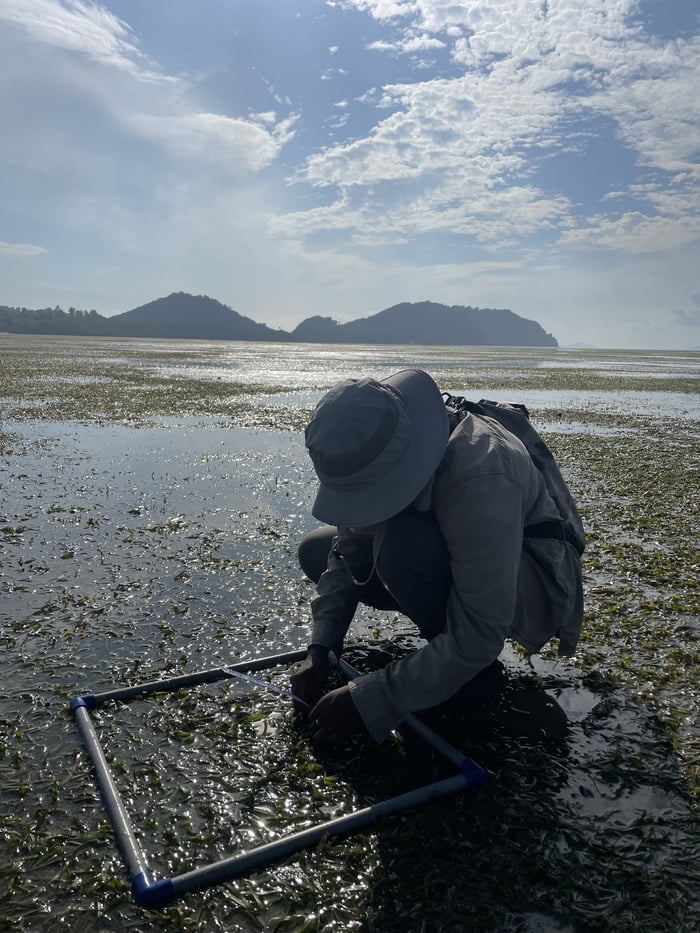
Sunrise over a mixed seagrass meadow (Syringodium isoetifolium, Cymodocea sp and Halophila ovalis) in Pulau Setindan, Johor, Malaysia.
Juvenile Striped Eel Catfish (Plotosus lineatus) using seagrass as a nursery, spotted using baited remote underwater video (BRUV) – in Bahoi, North Sulawesi, Indonesia.
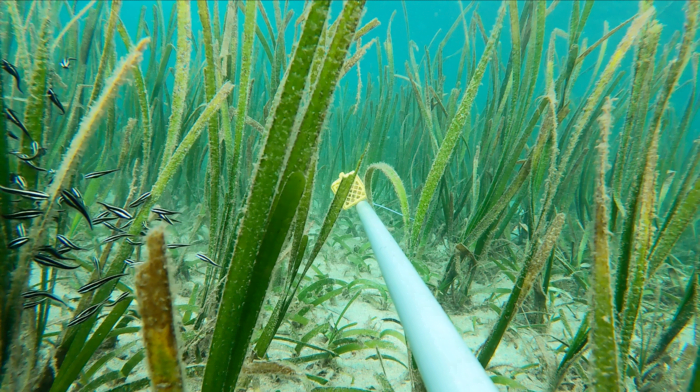
Schools of Mottled Spinefoot (Siganus fuscescens) and a Milkspot Puffer (Chelonodontops patoca) using the seagrass area, observed using baited remote underwater video (BRUV) as part of ongoing fieldwork – with Yapeka in Bahoi, North Sulawesi, Indonesia.
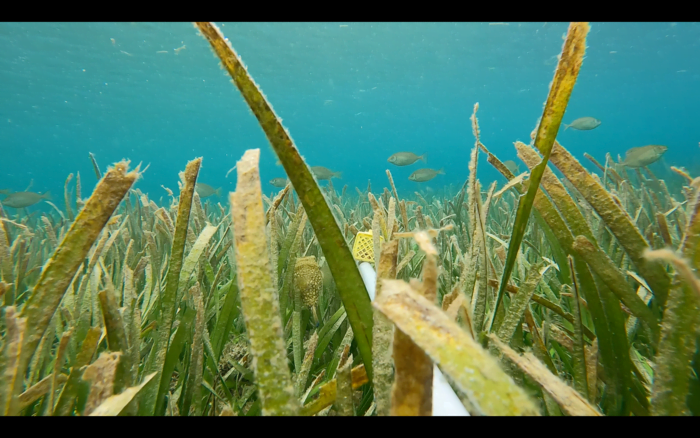
A traditional fishing trap set up between a dominant Tape Seagrass meadow (Enhalus acoiroides) and reef habitats. These methods do not target specific species and bycatch can be selectively released dependent on species - in Bulutui, Indonesia.
The development of this resort has directly removed areas of mangrove, seagrass and coral reef in an area known to be a popular with dugongs. This resort will provide thousands and jobs and tourism income to the surrounding communities – in Tarabitan, Indonesia.
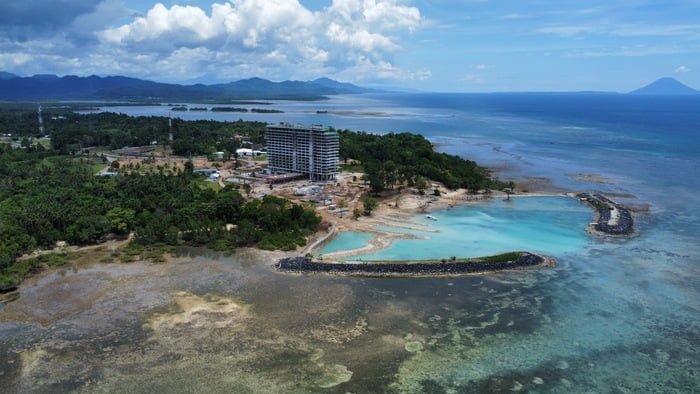
Deploying and securing a remote underwater camera in a Tape Seagrass (Enhalus acoroides) meadow to record seagrass-associated faunal communities in the area in Tarabitan, North Sulawesi – with Joandi Arendege from Yapeka.
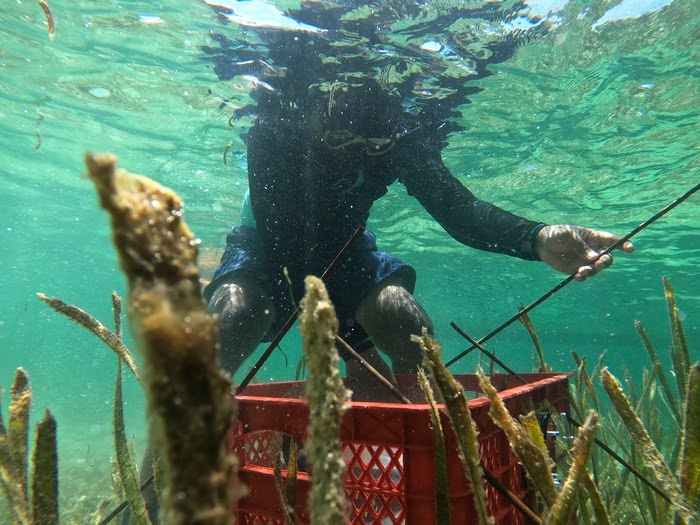
Deploying baited remote underwater video (BRUV) cameras in seagrass meadows around the Sibu-Tinggi archipelago, Eastern Malaysia – with Dhivya Nair from MareCet.
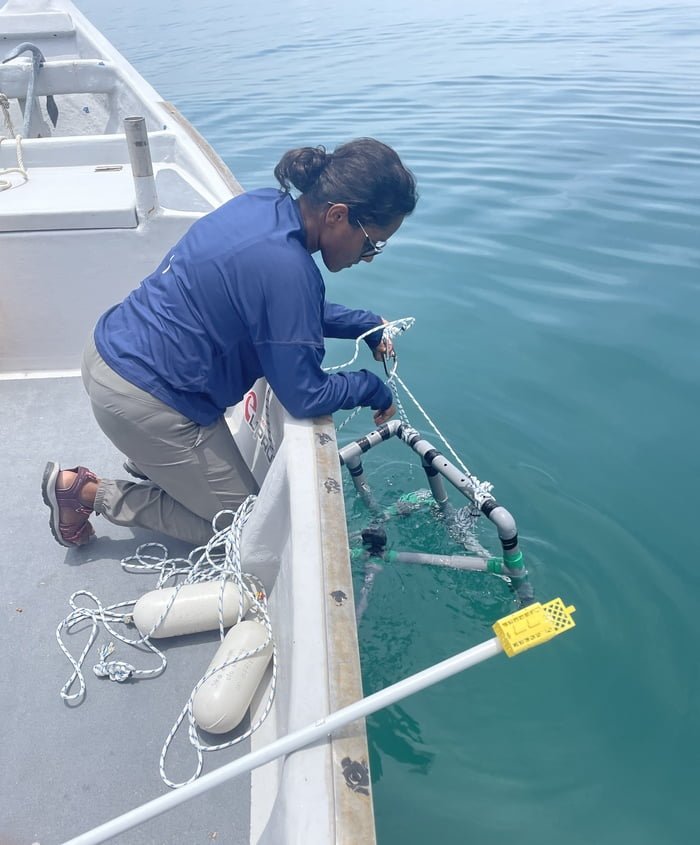
Setting up baited remote underwater cameras (BRUV) in Koh Mook, Trang, Thailand – with Save Andaman Network (SAN).
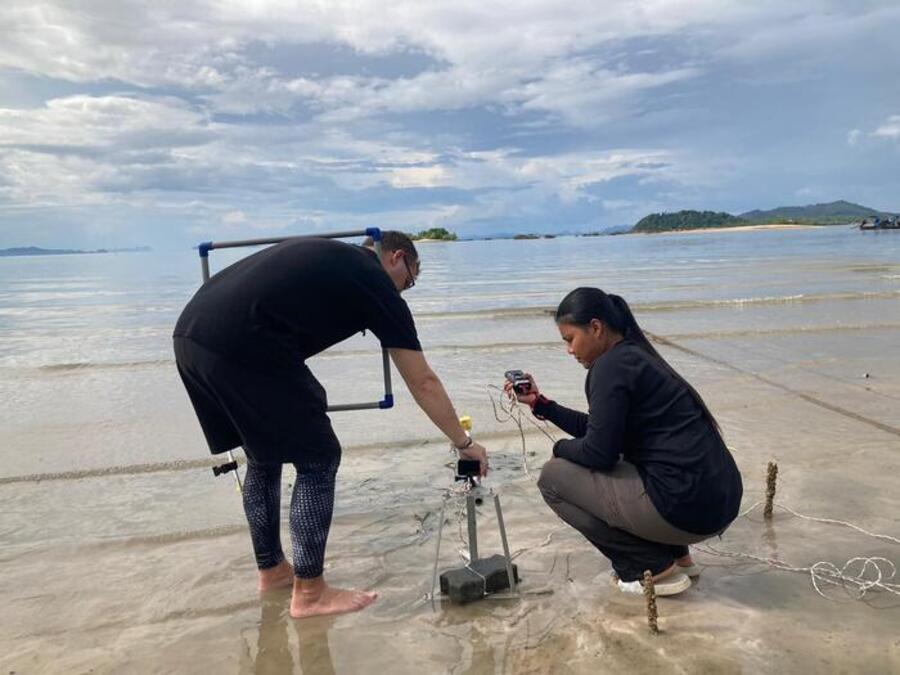
Rabbitfish (Siganus sp), one of the most important fish families to small-scale fisheries in the Indo-Pacific, and Leatherjackets (Monacanthidae sp) gather around baited remote underwater cameras during assessments in Tape Seagrass meadows in Koh Mook, Thailand – with Save Andaman Network (SAN).
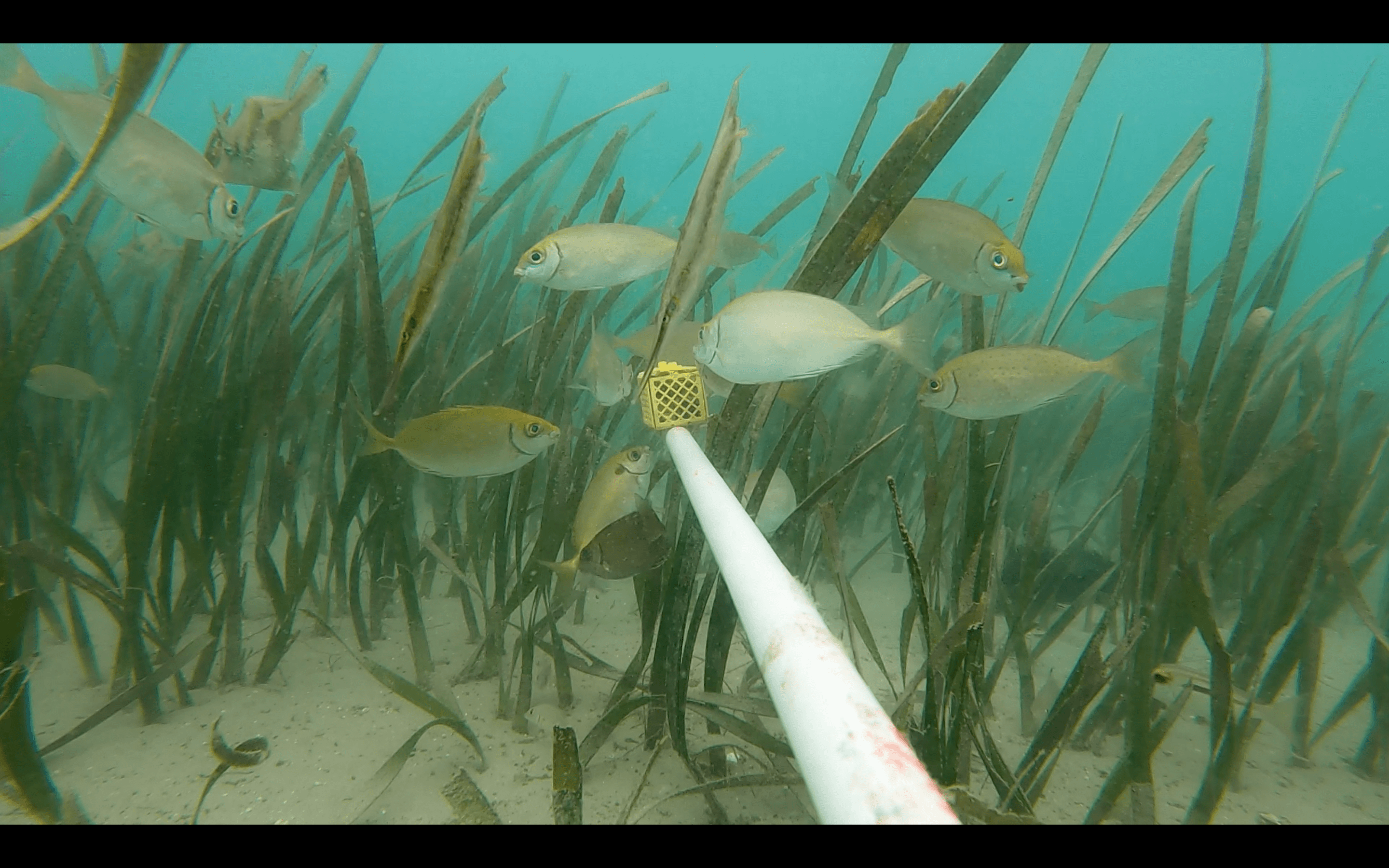
In Koh Mook, Thailand, the local community have set up ‘the crab-bank‘, a communal area where blue swimming crabs (Portunus pelagicus) are farmed sustainably, seagrass is grown and interviews can be held – with Save Andaman Network (SAN).
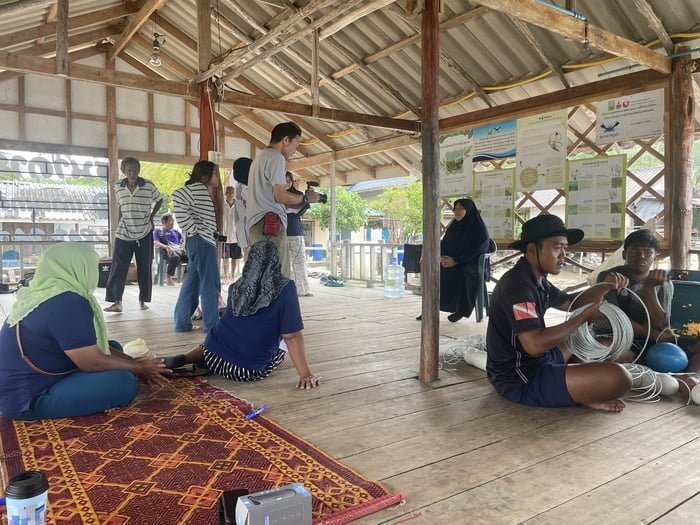
Various seagrass meadows in the Wetar straight, Timor-Leste, fill the coastline between mangroves and reef shelves, before the wall drops sharply to 3000m - With Blue Ventures.
Presenting fieldwork plans to the Project Team, local stakeholders and community members in Hera, Timor-Leste – with Mima from Blue Ventures – Timor-Leste.
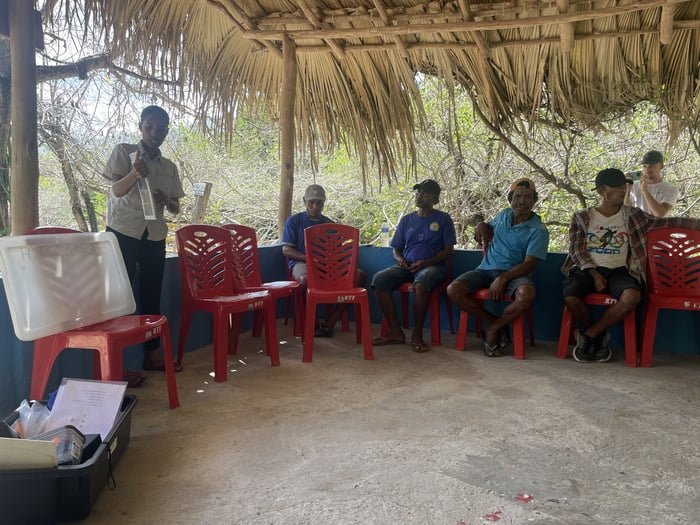
A 25m Blue Whale - the world’s largest animal - spotted surfacing for air during its annual migration past Timor-Leste and onto Australia during seagrass mapping fieldwork - with Blue Ventures Timor-Leste.